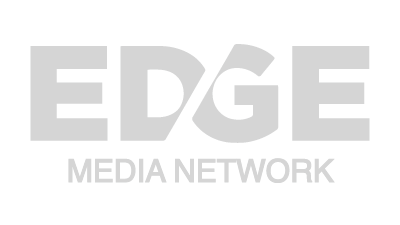
July 1, 2025
Guest Opinion: Time to improve queer obstetric health
Jan Oosting READ TIME: 4 MIN.
The first time I accompanied a queer couple through labor as a nursing student, we spent as much energy correcting the electronic health record, making sure both mothers were listed, as we did on coaching them breathing techniques. That was 2004, and I wish I could say those simple fixes are routine today.
Instead, queer people still enter birthing suites carrying an extra, invisible risk factor: a health care system that too often ignores or misunderstands our families. Recent national data trace a troubling line from bias to outcomes.
In a 2022 analysis of 53,000 pregnancies, those reported by queer people were more than three times as likely to end in stillbirth compared with pregnancies to heterosexual cisgender women who have sex with men. Sexual-minority queer women are also 50 percent more likely to experience perinatal stress and depression, yet less likely to receive timely treatment.
Structural disrespect compounds the clinical risk, with over half of queer women saying bias marred their pregnancy, birth, or postpartum care, and 83 percent reporting complications. That is twenty points higher than their heterosexual peers.
A separate KFF survey found that one-third of LGBTQ+ adults encountered unfair treatment by a clinician in the last year alone. These numbers translate to real lives and to real mistrust.
Health outcomes are not ordained by biology; they bend with politics. A 2024 prospective cohort study revealed that in states lacking basic sexual-orientation protections, sexual-minority women were significantly less likely to start prenatal care in the first trimester. Each additional protective law nearly doubled the odds they would get early care.
Yet even as evidence mounts, the legal scaffolding is wobbling. Just last month, the U.S. Supreme Court allowed Tennessee’s ban on gender-affirming care for minors to stand, emboldening dozens of similar state laws and normalizing government intrusion into queer bodies. When legislators treat LGBTQ+ health as expendable, patients hear that message long before they walk into a clinic.
Clinicians themselves tell us they’re under-tooled. A 2024 survey of U.S. and Canadian medical schools showed a median of only 11 required hours of LGBTQI+ health content over four years—an improvement since 2011, but still far short of expert recommendations.
Nursing education also falls short. In a 2024 study, half of nursing students reported watching their clinical preceptors model stigmatizing behaviors - misgendering, excluding same-sex partners, or “forgetting” chosen names during patient care. When training normalizes erasure, it sets the stage for biased decisions in the birthing room.
Here, then, is a blueprint for equitable, informed care.
● Listen first, label later. Replace heteronormative intake questions (“So, who’s the dad?”) with open prompts that let patients define their own families.
● Collect sexual orientation and gender identity (SOGI) data and use it. Routinely asking about SOGI helps flag risk factors (like minority stress) and tailors screenings. Documenting partners empowers them to consent, comfort, and advocate.
● Screen for mental health with a trauma-informed lens. Given the elevated depression rates, integrate validated perinatal mood tools and fast-track referrals to queer-competent therapists.
● Center shared decision-making. Fertility journeys for many queer women involve assisted reproduction; discuss induction agents, vaginal birth after cesarean (VBAC), chest-/body-feeding options, and postpartum contraception without assumptions.
● Expand the care team. Collaborate with midwives, community birth workers, and doulas
experienced in LGBTQIA+ care, especially for queer women of color who face compounded racism and homophobia.
● Make inclusion visible. Pronoun pins, gender-neutral bathrooms, and imagery of diverse
families aren’t window dressing; they’re cues that reduce blood-pressure-raising vigilance before the blood pressure cuff ever goes on.
Health systems and educators must also act and take the following steps.
● Hard-wire competence. Require a minimum LGBTQIA+ maternal-health module in every obstetric, midwifery, and nursing curriculum, paired with standardized patient simulations that include scenarios centering queer women.
● Continuing education as patient-safety training. Tie maintenance of licensure or hospital privileges to periodic LGBTQIA+ competency refreshers, just as we do for infection control.
● Measure and publish outcomes. Stratify maternal morbidity and patient-experience dashboards by sexual orientation; what gets counted gets fixed.
● Hire and promote queer staff. Representation improves cultural humility and signals commitment.
● Advocate beyond the bedside. Professional associations should file amicus briefs against discriminatory laws and back insurance mandates for inclusive fertility and maternity benefits.
The current wave of anti-LGBTQ legislation isn’t just about bathrooms or puberty blockers; it echoes through every clinic door, telling queer families our futures are negotiable. Restoring faith will require providers to become vocal allies - challenging harmful laws, updating forms before patients have to ask, and funding research that no longer lumps us into “other.”
When queer women patients see clinicians fighting for our dignity outside the exam room, we are far more likely to walk through the door early and to keep coming back. In my role as a queer nurse educator, I have watched breakthroughs in obstetric science save countless lives. But a Doppler and a hemorrhage cart can’t undo the harm of an intake form that erases someone’s partner, or a clinician who hesitates over the word “wife.”
Health equity for queer obstetric care is within reach; it begins the moment every provider decides our families deserve to be seen, heard, and expertly cared for. Let’s make that decision the new standard of care, before another birth story turns into an obituary.
Jan Oosting, Ph.D., RN-BC, is an associate professor of nursing at City University of New York (CUNY)School of Professional Studies. She identifies as a member of the LGBTQ community.

